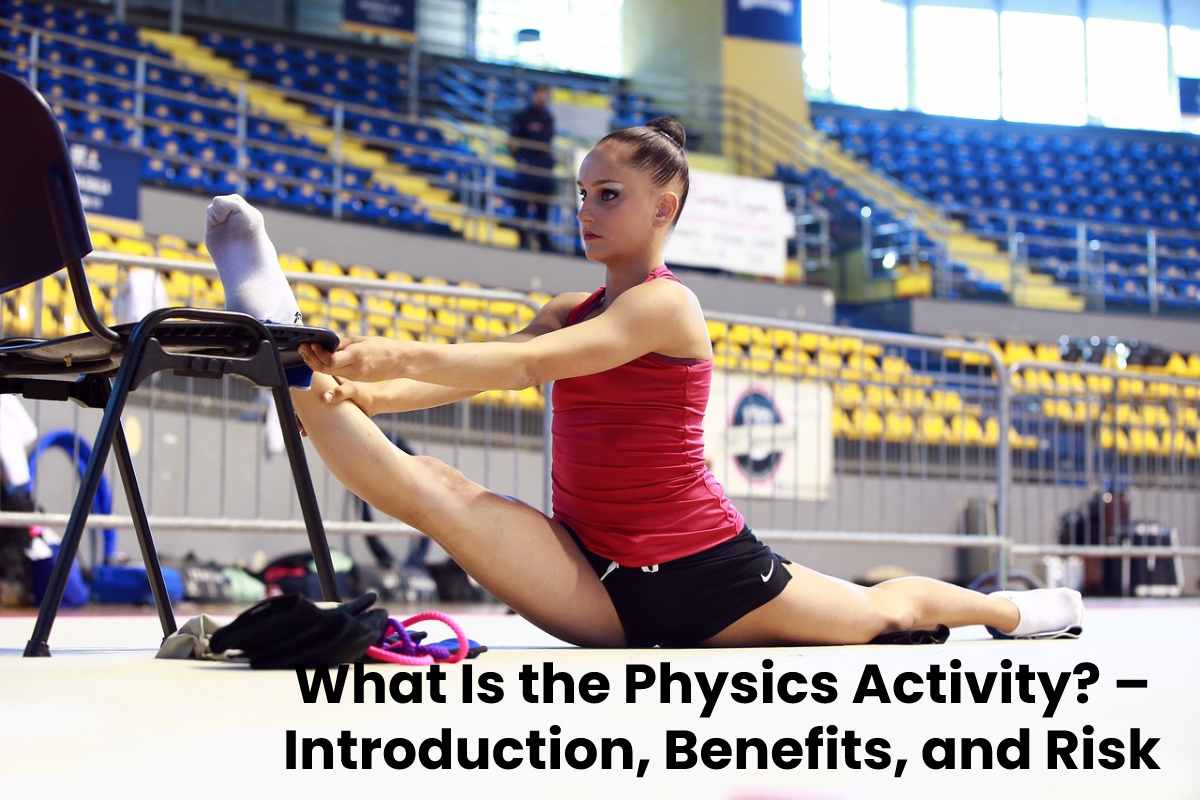Table of Contents
Introduction
Physics-activity refers to all effort, including during leisure time, to get to and from places or as part of a person’s work. Physical activity, both moderate and intense, improves health.
The most common physical activities include walking, bicycling, cycling, playing sports, participating in recreational activities and games; all of them can be done with any level of ability and for the enjoyment of all.
Benefits and Risks Of Physics Activity

Regular physical activity, such as walking, cycling, playing sports or participating in recreational activities, is very beneficial. It is superior to do any physical activity to nothing at all. By increasing physical activity relatively quickly throughout the day, people can easily reach recommended activity levels.
Physical inactivity is one of the main risk factors for mortality from non-communicable diseases. People with an insufficient level of physical activity have a 20% to 30% higher risk of death than people who achieve a sufficient level of physical activity.
Regular Physics Activity Can:
- improve muscular and cardiorespiratory fitness;
- improve bone and functional health;
- decrease the possibility of high blood pressure, coronary heart sickness, stroke, diabetes, several types of cancer (including breast and colon cancer), and sadness;
- decrease the risk of falls, as well as hip or vertebral fractures; and
- benefit continue healthy body weight.
In Children And Adolescents, Physical Activity Improves:
- physical fitness (cardiorespiratory and muscular)
- cardiometabolic health (blood pressure, dyslipidemia, hyperglycemia, and insulin resistance)
- bone health
- cognitive outcomes (academic performance and executive function)
- mental health (reduced symptoms of depression)
- the reduction of adiposity
In Adults And Older Adults, Complex Levels Of Physical Activity Improve:
- all-cause mortality
- cardiovascular disease mortality
- incidents of hypertension
- cancers specific to the organ in which the incident occurs (bladder, breast, colon, endometrium, esophageal adenocarcinoma, and gastric and renal cancers)
- type 2 diabetes incidents
- fall prevention
- mental health (reduced symptoms of anxiety and depression)
- cognitive health
- the dream
- they can also improve the measurement of adiposity
In women during pregnancy and the puerperium
Physical activity confers the following benefits on maternal and fetal health: a decreased risk of
- preeclampsia
- gestational hypertension
- gestational diabetes (for example, a 30% risk reduction)
- excessive weight gain during pregnancy
- childbirth complications
- puerperal depression
- newborn complications,
and physical activity has no adverse effect on birth weight or carries an increased risk of stillbirth.
Health Risks Of Sedentary Behavior
Lifestyles are becoming more sedentary due to motorized transport and the increasing use of screens for work, education and recreational activities. Data shows that a higher degree of sedentary lifestyle is associated with the following poor health outcomes:
In Children And Adolescents,
- an increase in adiposity (weight gain)
- poorer cardiometabolic health, physical fitness, behavioral/social behavior
- shorter sleep duration
In Adults:
- All-cause mortality, heart disease mortality, and cancer death
- incidence of cardiovascular diseases, cancer and type 2 diabetes.
Physics Activity Levels Around The World
- More than a section of the world’s adult population (1.4 billion adults) do not achieve a sufficient level of physical activity.
- Around the world, about one in three women and one in four men do not get enough physical activity to stay healthy.
- Inactivity levels are twice as high in high-income countries as in low-income countries.
- Global levels of physics-activity have not improved since 2001.
- Insufficient physical activity increased by 5% (from 31.6% to 36.8%) in high-income countries between 2001 and 2016.
Rising levels of physics-activity have negative repercussions on health systems, the environment, economic development, community well-being, and quality of life.
Worldwide, 28% of adults aged 18 and over were not active sufficient in 2016 (23% of men and 32% of women). This means that the global recommendations for moderate physical activity for at least 150 minutes per week, or vigorous physical exercise for 75 minutes per week, were not met.
Now high-income nations, 26% of men and 35% of women did not get enough physical activity, compared to 12% of men and 24% of women in low-income countries. Moreover, low or declining physical activity levels often correspond to countries with a high or rising gross national product.
The decline in physics-activity is partly due to inactivity during leisure time and sedentary behavior at work and home. Likewise, the increased use of “passive” means of transport also contributes to insufficient physical activity.
Globally, 81% of adolescents aged 11 to 17 years did not achieve a sufficient level of physics-activity in 2016. In addition, adolescent girls were less physically active than boys, and 85% of them compared to 78% of them did not meet the WHO recommendations for moderate to vigorous physical activity for at least 60 minutes a day.
How To Increase Physics Activity?

Countries and communities must offer all people more opportunities to be active to increase physics-activity. This requires a collective effort, both nationally and locally, across different sectors and disciplines to apply policies and solutions appropriate to a country’s cultural and social environment to promote, enable, and encourage physical activity.
Plans To Increase Physics-Activity Aim To Ensure That:
- walking, cycling and other forms of non-motorized active transportation are accessible and also, safe for all;
- employment and workplace policies encourage active commuting and opportunities for physical activity during the working day;
- childcare, schools, and higher education institutions provide safe, supportive spaces and facilities for all students to spend their free time actively;
- primary and secondary schools offer quality physical education that helps children develop behaviour patterns that keep them physically active throughout their lives;
- community-based and also, school sports programs provide appropriate opportunities for all ages and abilities;
- sports and recreation facilities offer options for all to access and also, participate in a variety of sports, dance, exercise, and recreational activities
- health care providers instruct and support patients to engage in regular physics-activity.

